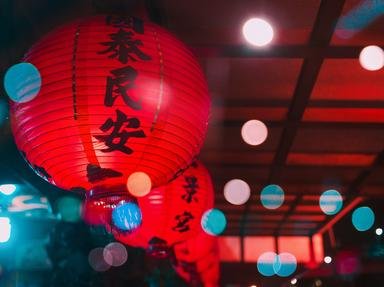Quiz Answer Key and Fun Facts
1. Taiwan is the name commonly used when referring to the Republic of China (ROC), as distinct from the People's Republic of China (PRC), usually called simply China. What other name is commonly used to refer to the country instead of the Republic of China, especially by international organizations such as the International Olympic Committee?
2. The island of Taiwan is located off the coast of China. Which of these bodies of water separates it from the Asian mainland?
3. In one of the local dialects, natives of the island of Taiwan describe themselves as "children of the Sweet Potato". To what does this name refer?
4. The official position of the island of Taiwan is given as 23° 46' N and 121° 00' E. Given this, which of these lines of latitude passes through the centre of the island?
5. The Taiwanese archipelago was formed about 4 or 5 million years ago when the Eurasian Plate and the Philippine Sea Plate collided. Which of the following is a term for this kind of island?
6. How might the terrain of the island of Taiwan best be described?
7. Taiwan is home to the world's fourth-highest mountain on an island. Formerly known as Mount Morrison and as Mount Niitaka, this peak has which of the following contemporary names?
8. The Chianan Plain covers most of the western third of the island of Taiwan. It is an important agricultural area. Which of these is the most important crop produced there at the start of the 21st century?
9. It is estimated that 20% of the plant and animal species found in Taiwan are endemic. What does this mean?
10. As well as the threat of earthquakes, residents of Taiwan can expect which of the following environmental events, possibly catastrophic, between July and October each year?
Source: Author
looney_tunes
This quiz was reviewed by FunTrivia editor
Tizzabelle before going online.
Any errors found in FunTrivia content are routinely corrected through our feedback system.

